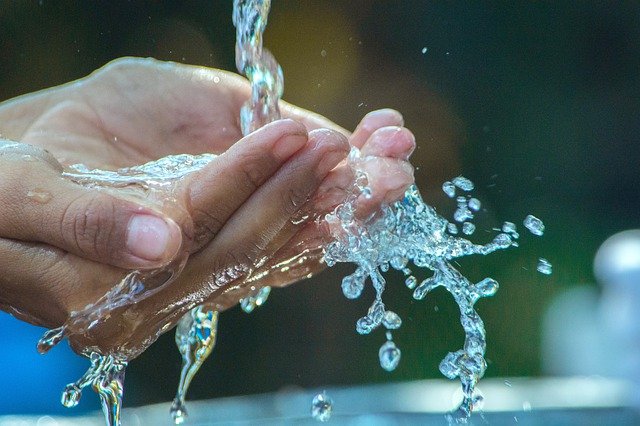For something that you use to get clean, most hand soaps have a pretty nasty ingredient list. But no matter how negative their environmental impact, you can’t just avoid them the way you can other product categories. Handwashing is important for health and safety. There are lots of ways to make your hygiene routine more sustainable. But finding truly eco-friendly hand soap is surprisingly difficult. Ultimately your choice will depend on your own personal environmental priorities.
Animal vs. Vegetable Soap
Your first thought when selecting soap probably is not, “Is it vegetarian?” It’s easy to forget that the earliest soaps were made with animal fat, and many soaps still are today. Vegetable oil-based soaps were not invented until the Middle Ages when olive oil began to be used. To this day, Aleppo soap from Syria is still often attributed medicinal qualities against acne and eczema. Castile soap, originally made in Spain, is lauded for its versatility. But vegetable oil-based soaps didn’t achieve common use until the 20thcentury.
It’s quite natural to assume that vegetable-based soaps are more sustainable than those made from animal fat. Aside from the ethical question, animal agriculture is a major contributor to climate change. But one life cycle analysis (LCA) determined that the production of animal fat-based soaps resulted in a lower climate impact (PDF file) because the animal fat is a waste product.

If that line of thinking seems suspect, or cruelty-free is a top value for you, PETA has suggestions for vegan hand soaps. If you choose vegan soaps, be sure to check the ingredients list for palm oil, which has its own significant environmental issues.
Bar vs. Liquid
Good old-fashioned bar soap requires little to no packaging, and the packaging it does use is usually recyclable. Liquid soaps’ plastic pump containers are rarely recyclable or reusable. The British website Ethical Consumer confirms that bar soaps are less likely to contain petroleum, use less plastic packaging, and have lower emissions from transportation than liquid soap. Among their recommended brands, Bentley Organic and Lush are available in the U.S.
Yet the same LCA that favored animal fats concluded that the climate impact of bar soap is higher because it requires more raw materials. At this point, you may be questioning the quality of this particular analysis. A different LCA determined that bar soaps have a lower impact than liquid soaps for carbon footprint, ecotoxicity, ozone depletion potential, and eutrophication potential, due largely to the higher energy requirements of producing liquid soap and its packaging.
Whether influenced by climate impacts or simply personal preference, most people want to use liquid hand soaps. And when it comes to choosing the most sustainable among them, toxicity becomes an important factor.
Toxicity
If you choose liquid hand soap, make sure it is soap, rather than a gel. Cleansing gels are made from petroleum and contain numerous other synthetic chemical ingredients. Even true soaps contain many untested chemicals (or worse, known carcinogens and toxins). The EPA Safer Choice label screens liquid hand soaps against their Safer Chemical Ingredients List of more than 950 chemicals. However, many brands, like Dr. Bronner’s and Burt’s Bees, do not participate in the Safer Choice program but rank well according to the Environmental Working Group.
The Environmental Working Group’s Skin Deep database provides much more detailed information about individual products. Sally B’s Skin Yummies and refillable Attitude hand soaps are among the EWG Verified choices for liquid hand soaps. The better-known Mrs. Meyers Clean Day brand scores in the respectable but not impressive 3-4 range. Codex Beauty Labs and Makes 3 Organics are among EWG’s top-ranked nontoxic bar soaps.
A quick note on antibacterial soaps: They do not provide any added protection against viruses like COVID. Manufacturers have not provided any evidence to the FDA that their ingredients are either safe or effective. The overuse of antibiotics contributes to the rise of antibiotic-resistant strains of bacteria. The FDA encourages consumers to avoid antibacterial soaps and wash their hands with plain soap and water instead.
Creative Solutions
Staring down the soap aisle at the supermarket trying to suss out the greenest option among hundreds of brands owned by the same handful of corporations is a daunting and possibly fruitless task. But many brands are guided by sustainable principles and take creative approaches to minimize their impact with nontoxic ingredients and reusable containers. You can also make your own soaps.
Whatever soap you use, you can use it in a way that minimizes its impact. Both LCAs note that the consumer phase contributes significantly to a soap’s footprint. One determined that on a per-wash basis, consumers use more than six times the amount of liquid soap (by weight) than bar soap. Use this knowledge to either switch to bar soaps or become more mindful of how many pumps of liquid soap you use each time you wash your hands.
The post Hand Soap: The Environmental Impact of Washing Your Hands appeared first on Earth911.








